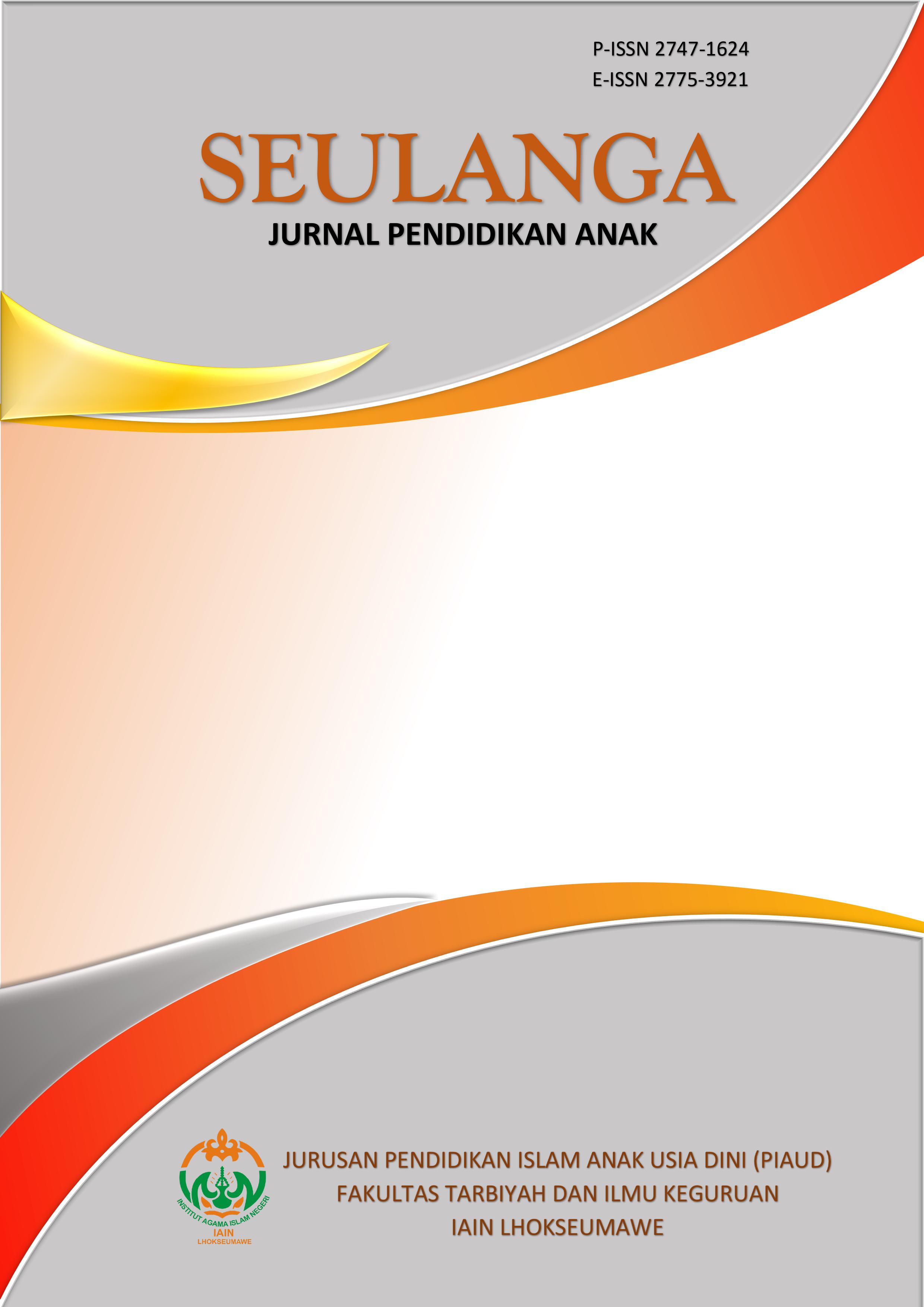Analysis of Mathematics and Creative Science Learning in Early Childhood Al-Kausar Perjuangan Kindergarten
Main Article Content
Inayatu Safitri
This study aims to analyze the implementation of mathematics and creative science learning in early childhood education at Al-Kausar Perjuangan Kindergarten. Mathematics learning focuses on introducing numbers and developing counting skills, while science learning emphasizes color recognition and environmental understanding through indoor and outdoor experiments. This research employs a qualitative descriptive approach, with data collected through observation, interviews, and documentation. The findings reveal that creative integration of mathematics and science through play-based activities enhances children’s curiosity, logical thinking, and problem-solving abilities. Activities such as rainbow experiments, gardening, tug-of-war, arranging bottle caps, storytelling, watercolor exploration, singing, and making picture frames from ice cream sticks effectively foster motivation and support cognitive, motor, and social development. These engaging and meaningful learning experiences help children gain a deeper understanding of basic mathematical and scientific concepts while maintaining enjoyment in the learning process. The study concludes that implementing creative, contextual, and play-oriented strategies is essential to stimulate interest, encourage active participation, and strengthen the foundation of mathematical and scientific literacy in early childhood education.
Adnyan, N. W. (2021). THE APPLICATION OF SCIENCE LEARNING MEDIA IN EARLY CHILDHOOD "INDEPENDENT LEARNING". Journal of Early Childhood Education, 6(1), 13–28.
Fitria, A. (2015). Introducing and Learning Mathematics in Early Childhood. Mu'is Journal of Gender and Child Studies, 1(2), 45–55.
HIDAYATI, A. U. (2017). TRAINING HIGH-LEVEL THINKING SKILLS IN MATHEMATICS LEARNING IN ELEMENTARY SCHOOL STUDENTS. SKILLED Journal of Basic Education and Learning, 4(20), 143–156.
Lubis, N. A., Umar, A., & Rijali Rais, M. (2021). Permainan Matematika dan Sains Kreatif bagi Anak Usia Dini di TK IT An Najah Takengon. Seulanga : Jurnal Pendidikan Anak, 2(2), 63–72. https://doi.org/10.47766/seulanga.v2i2.137
Marliah, S. (2019). Optimizing early childhood mathematical logic skills through science games. Journal of PGRA Study Program, 5(1), 39–53.
Muqdamien, B. (2021). THE DEFINITION STAGE IN THE FOUR-D MODEL ON RESEARCH & DEVELOPMENT (R&D) OF SNAKE LADDER EDUCATIONAL PROPS TO IMPROVE SCIENCE KNOWLEDGE. Journal of Intersections, 6(1).
Noor, F. M. (2020). Introducing SCIENCE Literacy to Early Childhood Students: A PIAUD Student's Perspective. Thuftula, 8(1).
Sit, M., & Rakhmawati, F. (2022). Development of Learning Models of Science, Techology, Engineering, Arts, and Mathematics in Early Childhood. Journal of Obsession: Journal of Early Childhood Education, 6(6), 6813–6826. https://doi.org/10.31004/obsesi.v6i6.3496
Susetyo, B. (2021). THE SCIENCE AND MATHEMATICS LEARNING MODEL IN EARLY CHILDHOOD USES THE SHOOTING APPROACH AND LOOSE PARTS TECHNIQUE. Journal of Educational Technology, 6(1), 1–7. https://doi.org/10.32832/educate.v6i1.5262
Umar, A. (2020). MATHEMATICS AND CREATIVE SCIENCE GAMES FOR EARLY CHILDHOOD AT KINDERGARTEN IT AN NAJAH TAKENGON. SEULANGA : Journal of Children's Education, 5(2), 63–72. .9




